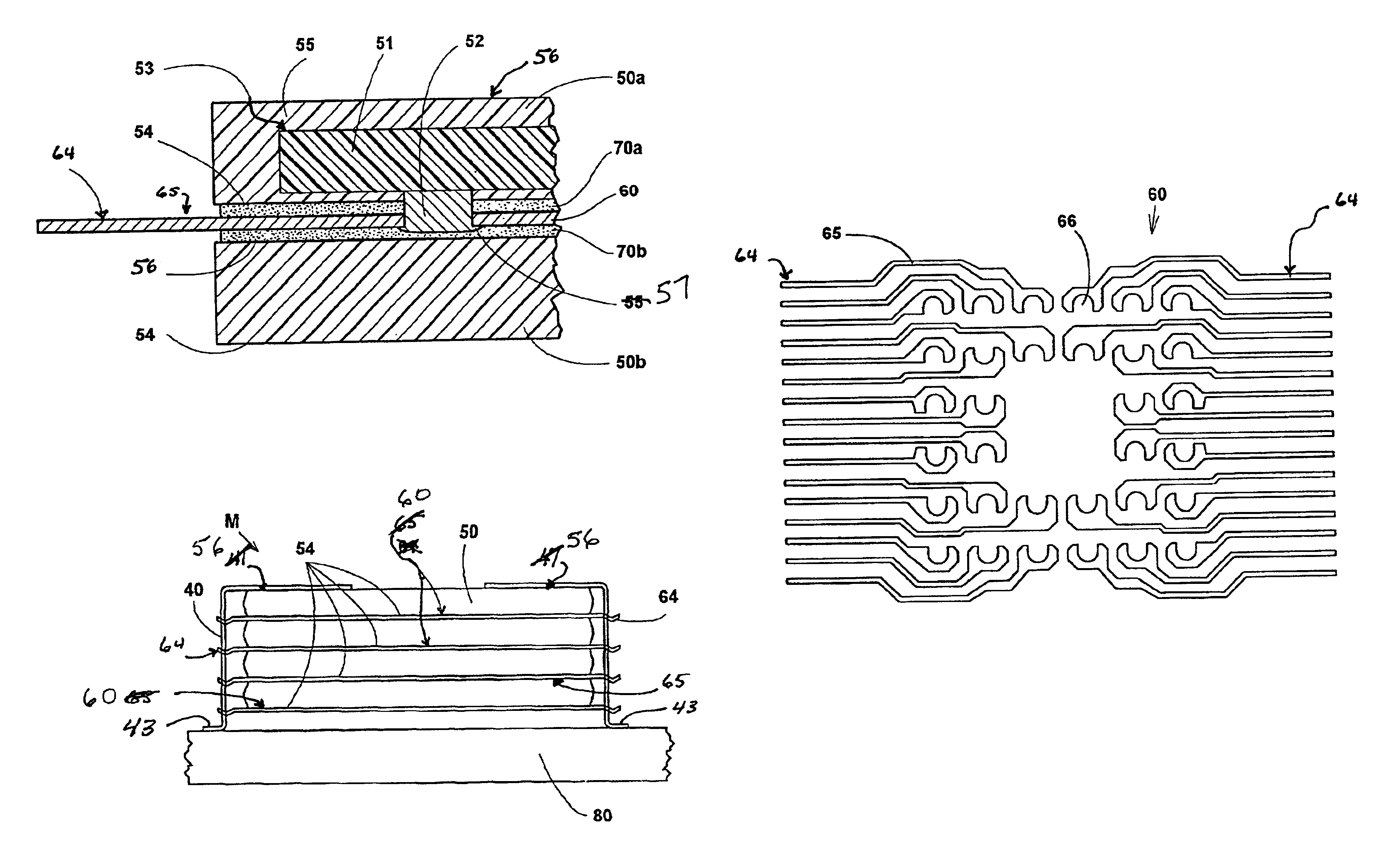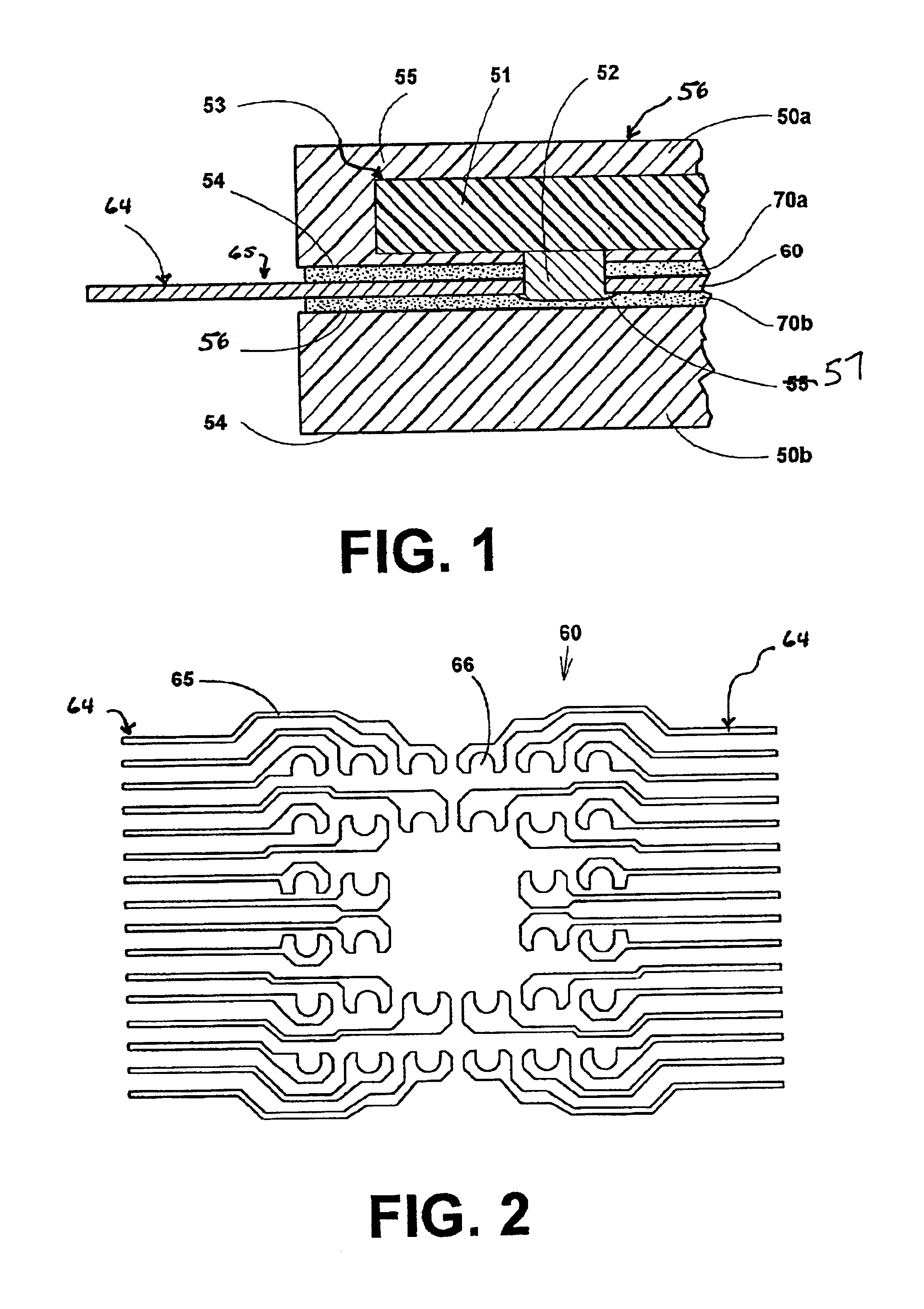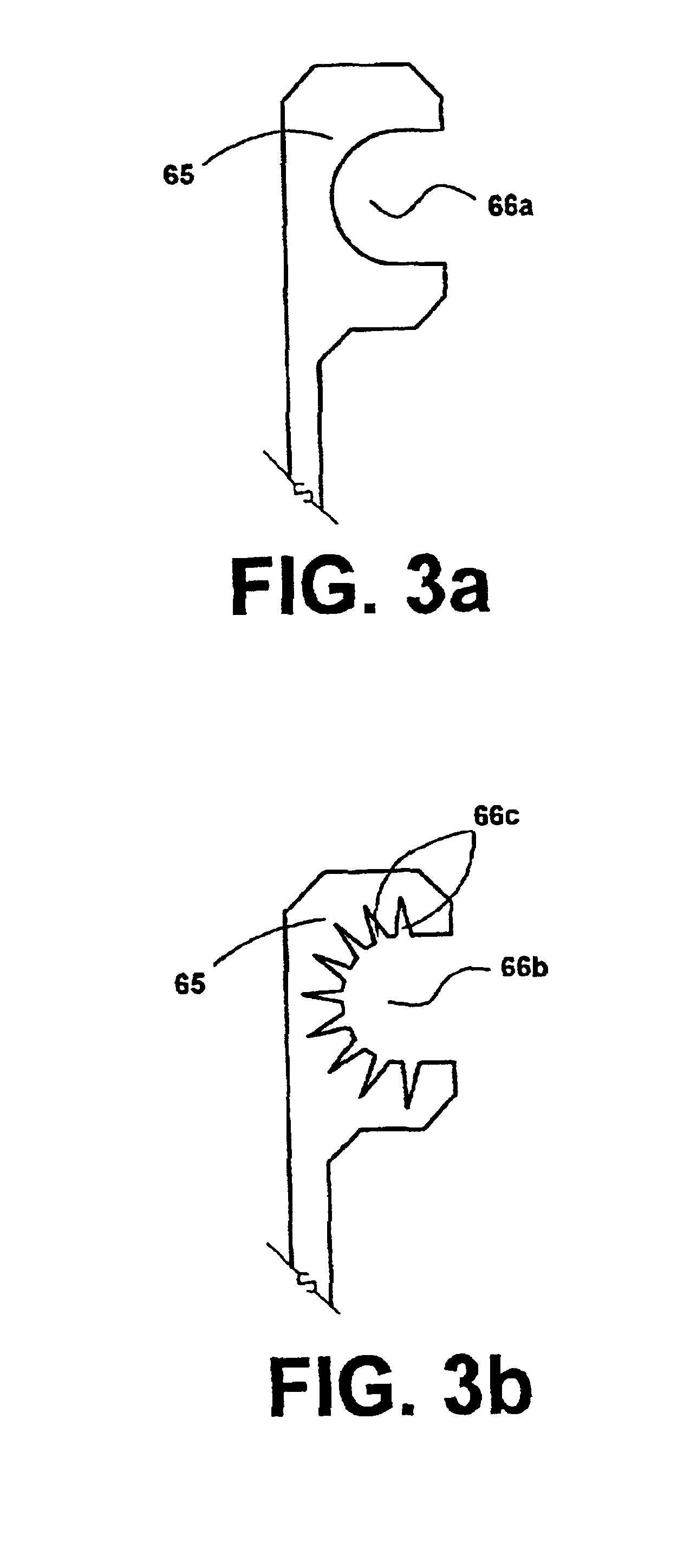High density integrated circuit module
a high-density, integrated circuit technology, applied in the direction of printed circuit assembling, printed circuit manufacturing, basic electric elements, etc., can solve the problems of affecting the efficiency of automated assembly, typically having ball irregularities or inconsistencies, etc., to improve space efficiency and heat dissipation, increase space efficiency, and improve the effect of space efficiency
- Summary
- Abstract
- Description
- Claims
- Application Information
AI Technical Summary
Benefits of technology
Problems solved by technology
Method used
Image
Examples
Embodiment Construction
[0022]Other and further objects, features and advantages will be apparent from the following description of the preferred embodiments of the invention, given for the purpose of disclosure and taken in conjunction with the accompanying drawings.
[0023]The letter of a reference character containing numerics followed by a letter, either identifies the relative placement of the referenced element within a stacked module or it identifies a specific embodiment.
[0024]Referring now to FIG. 1, a typical ball-grid-array package 50 is comprised of an integrated circuit 51 surrounded by an essentially rectangular solid resin casing 55. Package leads 52 extend from the bottom surface 54 of the casing in a two-dimensional grid pattern providing electrical and thermal coupling to one or more integrated circuit die 51 that are embedded within the protective casing. The external portion of each package lead 52 includes a coating of solder having a semi-spherical shape. Typically, the protective casin...
PUM
| Property | Measurement | Unit |
|---|---|---|
| Shape | aaaaa | aaaaa |
| Electrical conductor | aaaaa | aaaaa |
| Thermal conductivity | aaaaa | aaaaa |
Abstract
Description
Claims
Application Information
 Login to View More
Login to View More - R&D
- Intellectual Property
- Life Sciences
- Materials
- Tech Scout
- Unparalleled Data Quality
- Higher Quality Content
- 60% Fewer Hallucinations
Browse by: Latest US Patents, China's latest patents, Technical Efficacy Thesaurus, Application Domain, Technology Topic, Popular Technical Reports.
© 2025 PatSnap. All rights reserved.Legal|Privacy policy|Modern Slavery Act Transparency Statement|Sitemap|About US| Contact US: help@patsnap.com



